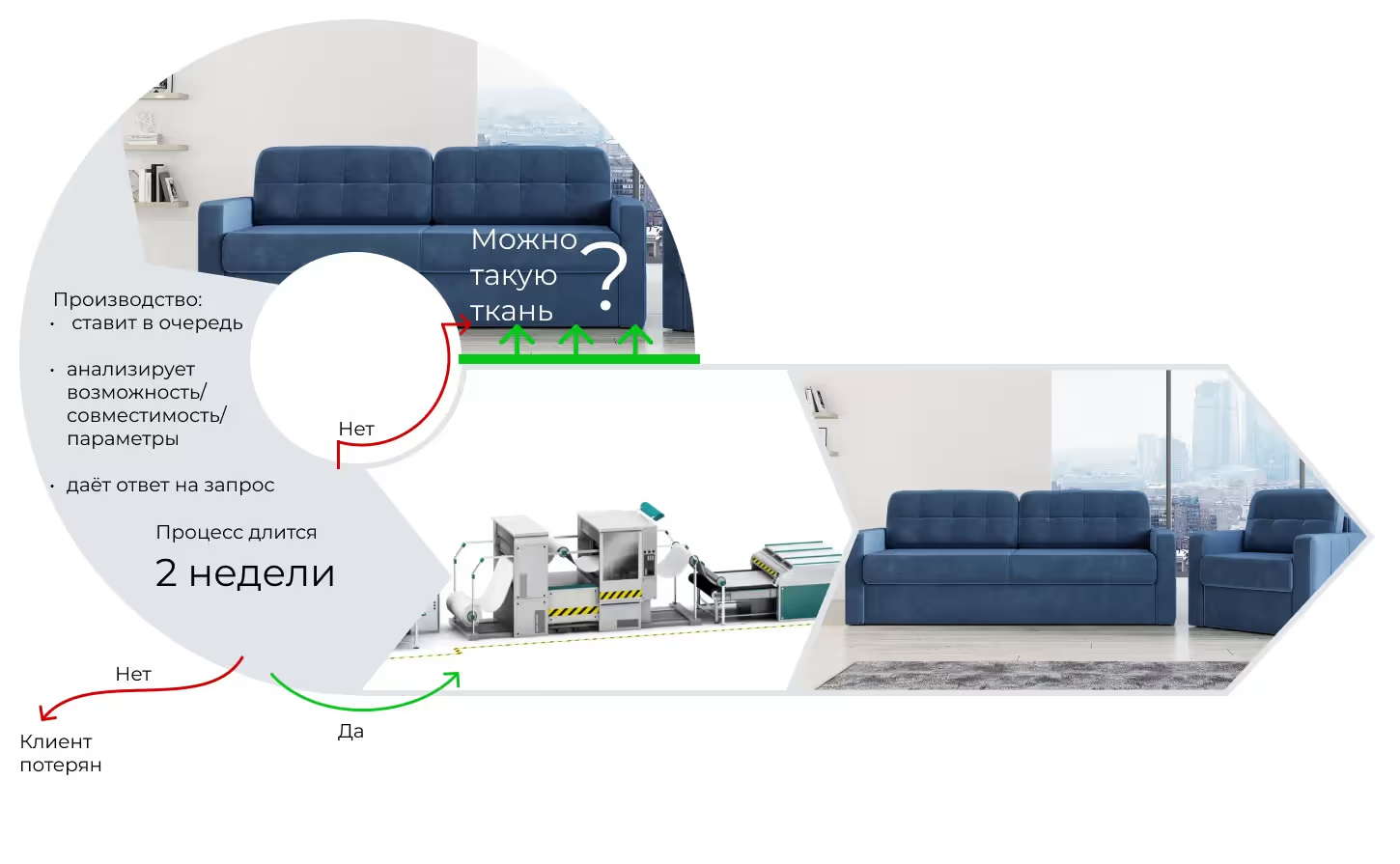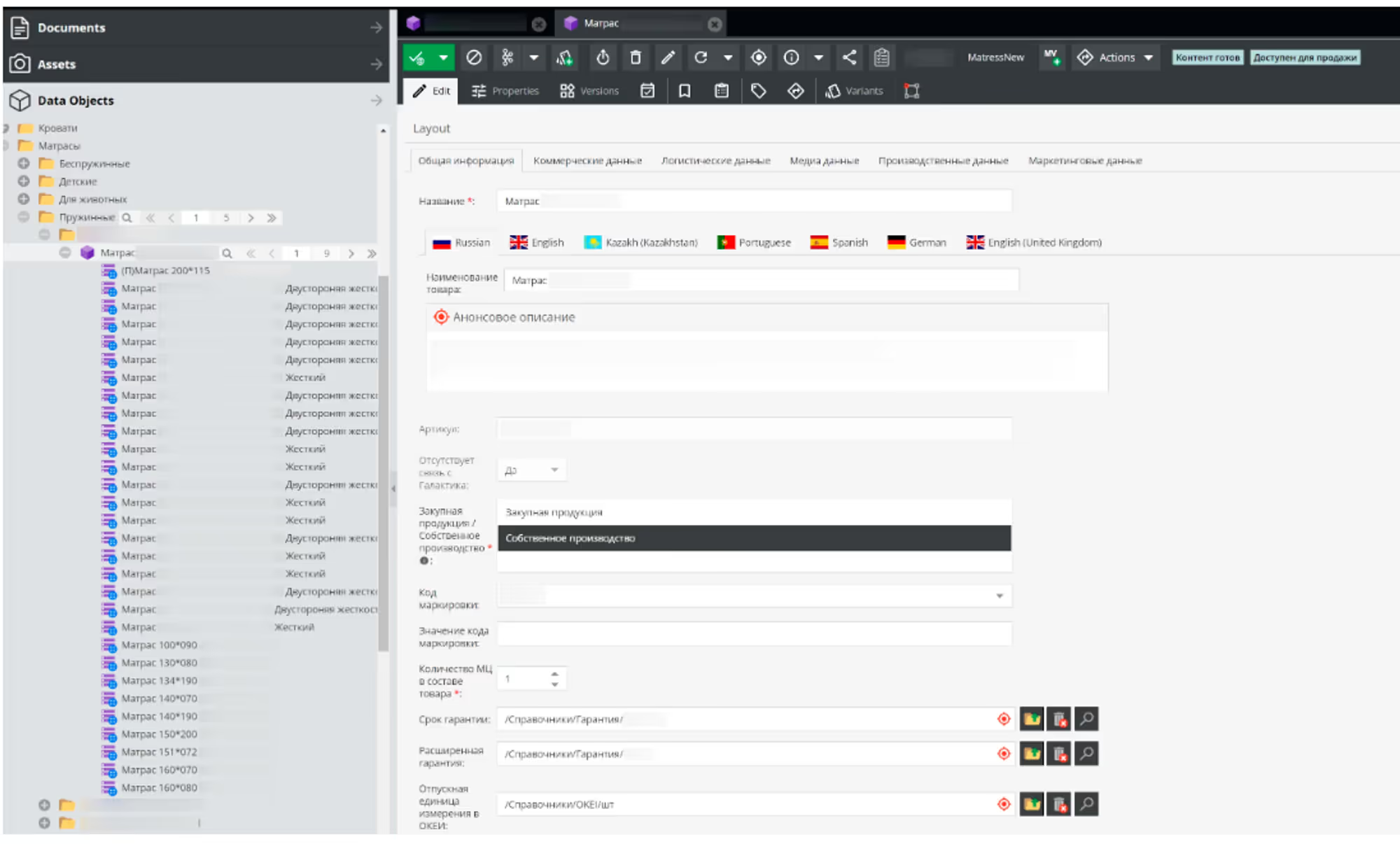When you are responsible for a product throughout its entire life cycle — from development to sales — you can endlessly adapt it to customer needs: create custom-made products or customize basic items.
Wanting to show the buyer all the options, the company often starts a huge catalog. In theory, this shows diversity. But in practice, customers see hundreds of pages of similar products with minor changes: in color, size, and the availability of additional elements. Such a detailed catalog is difficult to maintain manually, difficult to navigate, and each new page reduces conversions.
KT.team, an integrator of PIM systems, explains what to do when you want to meet the customer's wishes and how the PIM system will help with this. For Ascona, our team implemented a PIM system that allowed us to provide information about 500 million items in only 2,000 cards.
The problem: 500 million products, of which the customer sees only 0.5%
Ascona is a major manufacturer and seller of sleep products: mattresses, furniture and textiles. The goods are manufactured at our own factories in Russia, so the buyer can order the product according to their preferences, for example, choose the fabric and the height of the legs for the sofa, change the color and size of the cabinet and find other individual solutions from among the possible. Products are sold in online stores and offline outlets.
Each model can be manufactured in many variations: Ascona's full catalog includes about 500 million product variations.

To sell any of the product variations, it is necessary to ensure that each of them exists as a separate article in the company's systems. This means that you need to create individual cards for them in the ERP system and on the website.
But this is often impractical. In terms of labor costs, both the flagship product and the unclaimed option with a non-standard combination of characteristics are the same for the content management department. At the same time, there are 1,000 frequently sold items that, most likely, no one will ever order. In addition, 500 million cards are difficult to navigate — finding the right variation would take a long time.
Therefore, in fact, the range included only basic products and a minimum set of their variations.
What about unique combinations? Their order was long and time consuming for everyone: the buyer, the seller, the production.
If a buyer wanted, for example, to change the height of the bed legs, they had to check with the production technologists whether such changes were acceptable and wait up to two weeks for a response. Customers didn't want to wait and either ordered items from the visible part of the catalog or turned to other manufacturers. The broadest customization options were not in demand.

Solution: product cards in the PIM system take into account all options
To help Ascona, the KT.team immersed themselves in all the company's processes and collected information about all stages of product sales: from technological maps to offline sales. As a result, we implemented a PIM system that collects all data and presents it in a convenient form: 2,000 cards were enough for 500 million items.
We identified product models that customers can customize and created master cards with descriptions for them. A master card is a combining card for all possible variations of one product. It sets both common characteristics for all variations and possible variants of all modifiable attributes and parameters.
Each model in the category has such a master card, that is, every model of sofa, bed, bedside table, pillow and other goods.

How is a card created for a particular product variation? For each of the variable characteristics, the KT.team has created guides with possible options, for example: a directory of fabrics for sofas, a guide to mattress lengths, a guide to materials for filling sofa backs. The acceptable values for placement in these directories were provided by Ascona technologists.
We also had to take into account more difficult conditions. Some characteristics (for example, type of fabric) may affect the applicability of others (the type of bedside cover). Not all bed models can choose a soft backrest, different types of chairs are suitable for different types of chairs, etc. Such relationships had to be taken into account in directories as an additional condition.
A system of master cards and directories makes it easy to create any acceptable product variation at the moment when you need it. When a seller or buyer selects the necessary characteristics from the lists, a new article is created in all the company's systems. At the same time, IT systems are not overloaded with an excessive number of unused items.

If the product has few changeable characteristics, the system uses the function of automatically creating cards. This option is needed for products that cannot be significantly changed. For example, if the mattress model can only be changed in length and width, all possible options will be created at once.
Result: 2,000 cards instead of 500 million demonstrate customization options
Thanks to the introduction of the PIM system, Ascona has simplified the processes of selling non-standard goods and generating new items. Now product information is collected in the PIM system in the format of master cards and directories. Their logic makes it possible to use the company's capabilities in terms of customizing goods in full.
How the work of departments has been simplified
- Only cards with complete and accurate information enter sales channels. Selecting characteristics from directories does not allow you to enter an invalid value into the master card or not specify it at all — errors when entering information manually are excluded.
- Each department sees its own piece of information. The master card contains all the data, but employees only see the attributes they need in their work: sellers see the product's consumer properties, and logisticians see the packaging features.
- The goods are linked to suitable services. For delivery, assembly and other options, separate cards were created, which were later linked to product master cards.
- The system can be maintained independently. The new model can be easily cataloged using directories. When a new type of product appears, a matrix of approved materials for this product category is added to it.
How the sales process has been simplified
- The buyer has a choice among 500 million product variations. By selecting characteristics, you can create your own version of the product.
- The seller collects goods for a specific request immediately, taking into account the possibilities and limitations of production. He can immediately guide the buyer on the timing of production and delivery.
- The deadline for approving non-standard orders has been reduced. The system allows you to immediately see the possibilities and restrictions for changes in the basic product: the buyer does not have to wait for an answer from technologists whether it is possible, say, to extend the sofa or make a wardrobe in a different color.







